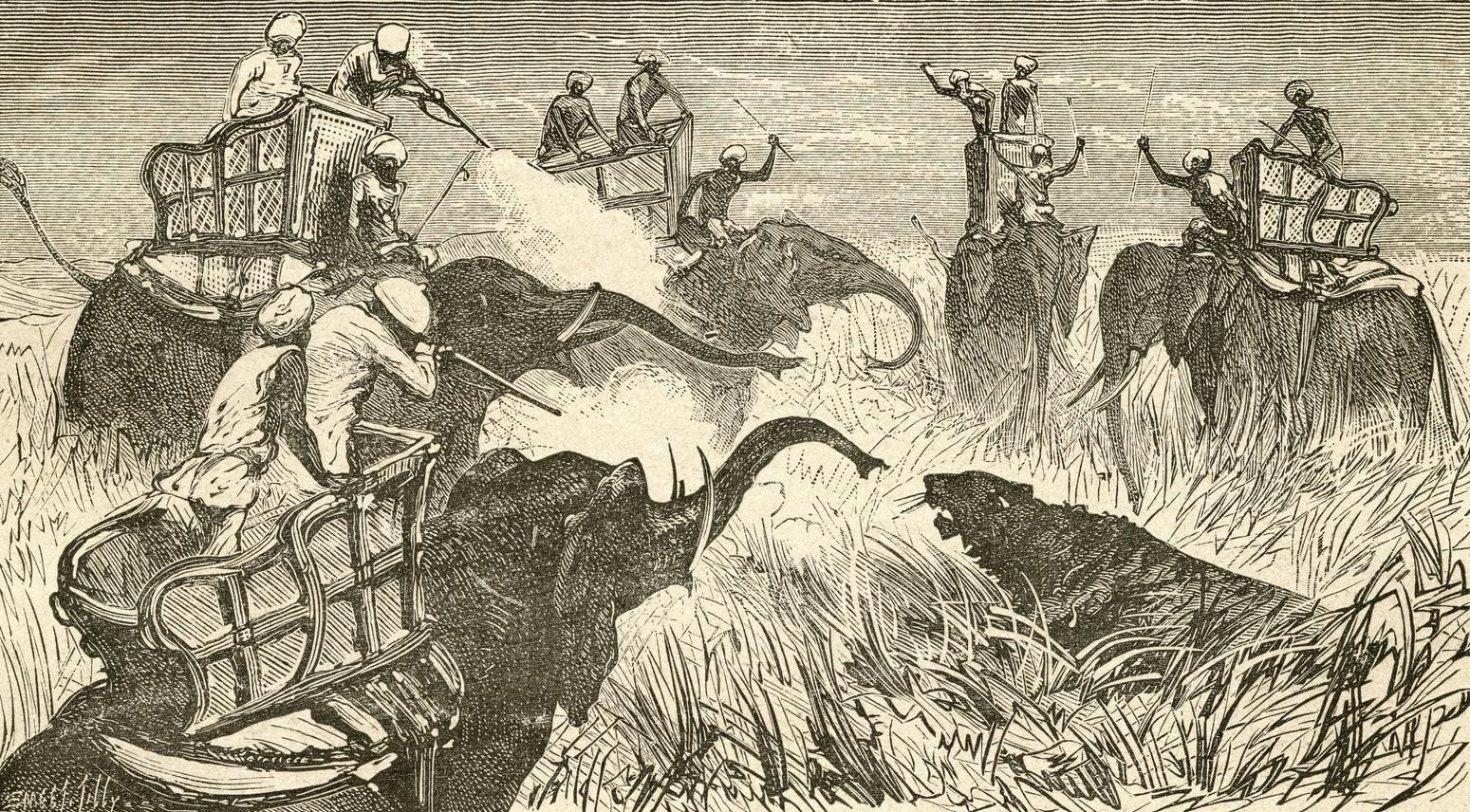Felines comprise all cat species, from domestic cats to big cats like leopards, lions, tigers and … More
All cats are predators – they hunt and kill other animals for food. Some cats, of course, are more formidable predators than others.
Among cat species, the tiger reigns as the “apex” predator of its class. It is the largest known cat species and has no rival in the animal kingdom – save for humans.
To be fair, humans were no match for tigers before the invention of modern weaponry. Even until the early 1900s, tiger populations were healthy around the world.
Guns, modern agriculture and industrialization changed its fate. Here are the details on the decimation of the nine known tiger populations, with special attention paid to the three tiger lineages that have gone extinct.
Bali Tiger (Extinct)
The Bali tiger was the smallest of all tiger subspecies and native only to the Indonesian island of Bali. It was last definitively seen in the wild in the 1930s, and declared extinct shortly thereafter. Due to its limited range and the island’s growing human population, the Bali tiger suffered from deforestation, loss of prey, and hunting. Its extinction is particularly tragic because no Bali tigers were ever kept in captivity – once the last wild individuals disappeared, the subspecies was lost forever.
Caspian Tiger (Extinct)
Once widespread across Central Asia, the Caspian tiger was declared extinct in the 1970s.
Once ranging across Central Asia, the Caspian tiger was a massive subspecies that inhabited riverine corridors and forested areas across what is now Turkey, Iran, and western China. Despite its imposing size and adaptability, it fell victim to widespread hunting, habitat fragmentation and Soviet agricultural projects in the mid-20th century. Officially declared extinct in the 1970s, recent genetic studies show it shared close DNA similarities with the Amur tiger, fueling conversations about potential rewilding using its closest genetic relative.
Javan Tiger (Extinct)
The Javan tiger, native to the densely populated island of Java in Indonesia, was driven to extinction by the 1980s due to deforestation, agricultural expansion, and poaching. Although there have been occasional unverified reports of sightings, no conclusive evidence has surfaced in decades, and conservationists widely consider the species extinct.
Amur Tiger (Endangered)
The world’s largest living cat, the Amur tiger survives in the Russian Far East.
Also known as the Siberian tiger, the Amur tiger is the largest living cat in the world and primarily roams the Russian Far East, with a few straying into northeastern China. Once critically endangered, their numbers have rebounded to an estimated 500–600 individuals, thanks to intense conservation efforts and anti-poaching laws. However, their habitat remains under constant threat from illegal logging, infrastructure development and climate change, making their future far from secure.
Bengal Tiger (Endangered)
India’s national animal, the Bengal tiger is the most numerous remaining subspecies.
The Bengal tiger is the most numerous of the remaining tiger subspecies, primarily found in India but also in Bangladesh, Nepal, and Bhutan. Even so, only about 2,500 individuals remain in the wild. Despite being a cultural and national symbol, Bengal tigers face significant threats from habitat loss, human-wildlife conflict and poaching for their skin and body parts, which are still valued in illegal wildlife markets. Their survival hinges on continued protection and habitat connectivity across South Asia.
(Sidebar: Most Bengal tigers avoid humans — but not all. One became the deadliest man-eater in recorded history, killing over 400 people and evading capture for years. Read the full story here.)
Indochinese Tiger (Endangered)
This elusive subspecies inhabits the dense forests of Southeast Asia, including parts of Thailand, Laos, Vietnam and Cambodia. With fewer than 400 individuals left in the wild, the Indochinese tiger is particularly vulnerable due to deforestation for plantations and infrastructure, as well as poaching. Many live in isolated forest patches, making genetic diversity and breeding opportunities a growing concern for long-term survival.
Malayan Tiger (Endangered)
Critically endangered, fewer than 150 Malayan tigers remain in the wild.
Discovered to be genetically distinct from the Indochinese tiger only in 2004, the Malayan tiger is found exclusively in the tropical forests of the Malay Peninsula. Its population has plummeted to fewer than 150 individuals in the wild. The main threats are poaching and extensive deforestation for palm oil plantations. While Malaysia has launched national campaigns to save its iconic tiger, conservationists warn that without urgent and sustained action, this subspecies could be the next to disappear.
South China Tiger (Endangered)
Often regarded as functionally extinct in the wild, the South China tiger hasn’t been seen in its native habitat since the 1990s. Historically found across southern China, the subspecies was decimated during a government campaign to eradicate predators in the mid-20th century. While a small number survive in captivity, primarily in Chinese zoos, they suffer from inbreeding and lack of genetic diversity. Reintroduction efforts are underway, but without confirmed wild populations, their future is bleak.
Sumatran Tiger (Endangered)
The smallest surviving tiger subspecies, found only on Indonesia’s Sumatra island.
The Sumatran tiger is the smallest surviving tiger subspecies and is found only on the Indonesian island of Sumatra. With fewer than 400 individuals left in fragmented forest habitats, it is critically endangered. Illegal logging, human encroachment and poaching have devastated its population. Nevertheless, it benefits from being a conservation priority in Indonesia, with several protected areas and growing international attention.
Does thinking about the extinction of a species instantly change your mood? Take the Connectedness to Nature Scale to see where you stand on this unique personality dimension.








